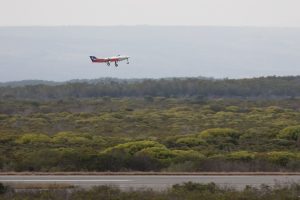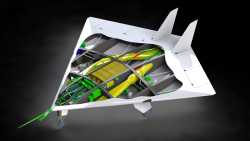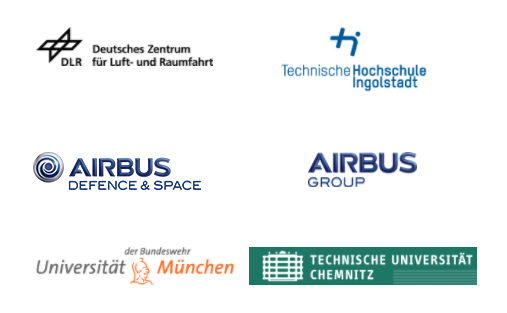2017-07-22 According to our partner defenceWeb in a piece published on July 18, 2017, the Overberg test range has hosted its first flight of a jet-propelled UAV.
Airbus Defence and Space (ADS) used Denel’s Overberg Test Range (OTR) for the successful testing of a new aircraft type that will aid development of future unmanned aerial vehicles (UAVs) for series production.
The unmanned jet-propelled demonstrator with the project name SAGITTA flew completely autonomously for around seven minutes over the test site in South Africa’s Southern Cape, on a pre-programmed course.
The innovative flying-wing construction demonstrated excellent flight characteristics during the test according to an Airbus statement.
This flight marked the successful completion of the first test phase, which included an extensive series of ground tests.
The demonstrator is the product of the ‘Open Innovation’/SAGITTA national initiative launched by Airbus in 2010.
The project sees Airbus working with institutes from the technical universities of Munich and Chemnitz, the University of the Federal Armed Forces (Universität der Bundeswehr) in Munich, the Ingolstadt University of Applied Sciences and the German Aerospace Centre DLR to jointly develop advanced technologies for unmanned flight.
The project started with a feasibility study of the flying-wing configuration.

Sagitta UAV on test flight i South Africa. Credit: Airbus Defence and Space
Criteria for the design included a high degree of autonomy, variable mission profiles and low levels of perceptibility.
To achieve this, the inter-institutional research team adopted approaches from academic and industrial research, developed these further and incorporated them into solutions for industrial application.
Airbus facilitated continuous exchange between experts, doctoral students and developers during the development stage.
Additionally, the company provided industrial facilities needed for integrating the technologies in the demonstrator at Airbus Defence and Space’s Military Air Systems Centre in Manching, Germany.
“With SAGITTA’s first flight, we proved how successful co-operation between industry and academic partners can be in the area of basic research,” said Grazia Vittadini, Head of Engineering at Airbus Defence and Space.
“We are increasingly shifting our focus towards these types of innovative concepts, in particular for the development of UAVs, so we can develop products quickly and efficiently for a growing market.”
The SAGITTA research vehicle was constructed to a scale of 1:4 and measures 3mX3m. It is designed as a flying wing and is powered by two 300 Nm turbines. Its maximum take-off weight is 150 kg.
The UAV’s stealth properties are primarily a result of its shape.
The airframe is produced completely from carbon fibre composite (CFC) using new manufacturing processes.
With the exception of the brakes, it is an “electronic flying device” controlled by electro-mechanical actuators instead of hydraulic components.
Even if the demonstrator isn’t a product destined for series production itself, Airbus Defence and Space and its development partners can use it to gain insights for new technologies in unmanned flight systems and to develop next-generation products to operational maturity.
According to the DLR Institute of Flight Systems, Sagitta is part of an open innovation approach to unmanned aerial technologies.
The project SAGITTA is led by Airbus Defence & Space and has the goal to further develop existing UAV technology to a higher maturity level.
To reach this several PhD students from different research institutions working on relevant research topics.
The project team includes the Technical University Munich, the University of the German Armed Forces in Munich, the University of Applied Sciences in Ingolstadt, the Technical University in Chemnitz, Airbus Group Innovations and the German Aerospace Center.

Unmanned aerial vehicles are becoming more common for civil and military applications, which are currently served by manned aircraft or are not deduced at the moment. In the context of civil applications of such aircraft current challenges are the integration into the civil airspace as well as autonomous mission conduction.
Military applications add the demand for low radar cross section and low power radiating data links.
The development of a scaled flight demonstrator with wing span of 3m and maximum takeoff weight of 150kg is common goal in the project.
This demonstrator aircraft exhibits a typical shape to achieve a small radar cross section provides the capability to flight upside down to point with a clean surface without edges and inlets into the direction of flight.
The Institute of Flight Systems develops the electrical power supply system, the actuation system for the flight control surfaces, the fuel system, a retractable landing gear and designs the complete wiring of the aircraft. Addressed research topics are in the area of air-to-air refueling and novel concepts for aircraft system monitoring.
Editor’s Note: The above set of briefing slides comes from a presentation to the press at the 2016 Airbus Defence and Space Trade Media Event, 2016.

The Sagitta Team.

